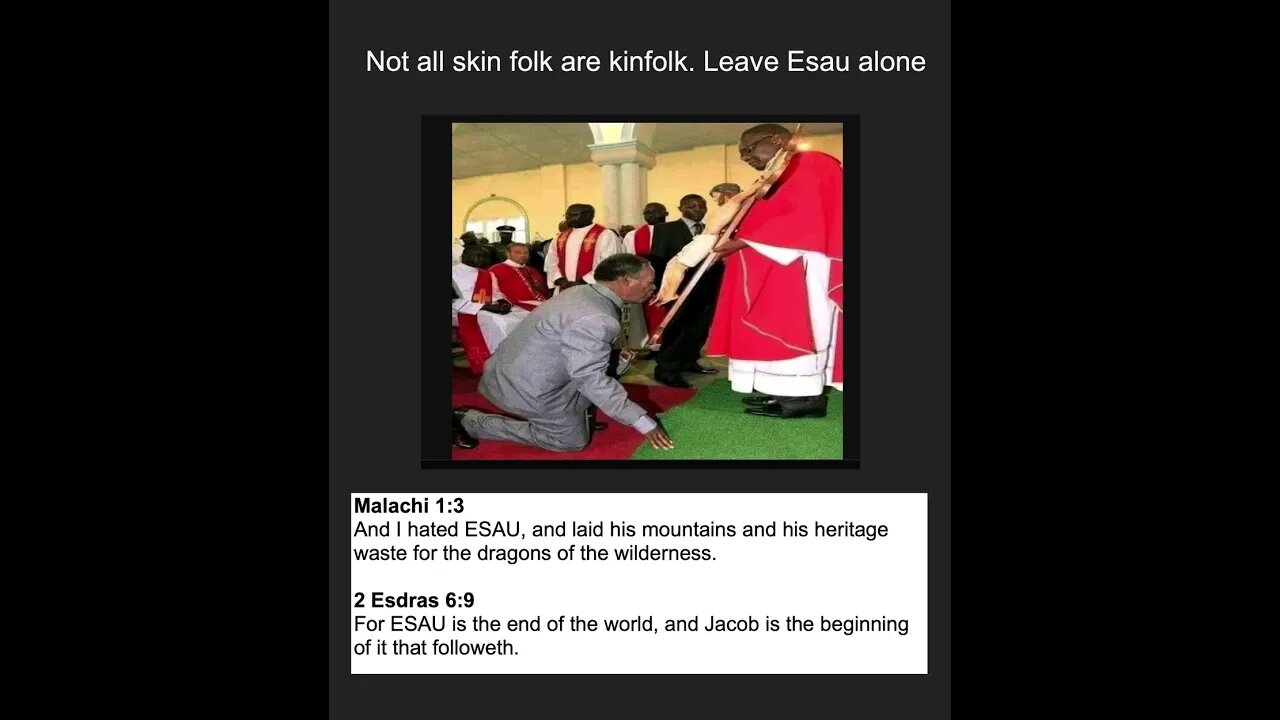Premium Only Content

ESAU - #youtubeshorts #shortvideo #tiktok #christianity #church #african #america #history
Pope Nicolas V and the Portuguese Slave Trade
With Portugal’s expansion into western Africa in the fifteenth century, Iberian merchants began to recognize the economic potential of a large-scale slave trafficking enterprise. One of the first to record this sentiment, according to Portuguese royal chronicler Gomes Eanes de Zurara, was a young ship captain named Antam Gonçalvez, who sailed to West Africa in 1441 hoping to acquire seal skins and oil. After obtaining his cargo, Gonçalvez called a meeting of the twenty-one sailors who accompanied him and unveiled his plan to increase their profits. According to Zurara, Gonçalvez told his crew, “we have already got our cargo, but how fair a thing would it be if we, who have come to this land for a cargo of such petty merchandise, were to meet with good fortune and bring the first captives before the presence of our Prince?” That night, Gonçalvez led a raiding party into Cap Blanc, a narrow peninsula between Western Sahara and Mauritania, and kidnapped two Berbers, one man and one woman. Another Portuguese mariner, Nuno Tristão, and members of his crew soon joined Gonçalvez. Although the raid resulted in less than a dozen captives, Zurara imagines in his account that Prince Henry of Portugal responded to this enterprise with, “joy, not so much for the number of captives taken, but for prospect of other [countless] captives that could be taken.”
While Gonçalvez’s voyage in 1441 is widely considered to mark the beginnings of the trans-Atlantic slave trade, it may also be viewed as an extension of an older tradition of raiding and ransom on both shores of the Mediterranean. Upon returning to Portugal, Gonçalvez treated his captives in accordance with this custom, and allowed them to negotiate the terms of their release. Rather than offering a ransom of money, the captives promised to give Gonçalvez ten slaves in exchange for their own freedom and safe passage home. According to royal chronicler Zurara, the Berbers explained that these new captives would be “black [and] not of the lineage of Moors, but Gentiles.” Thus in 1442, Gonçalvez returned his Berber captives to Western Sahara, receiving as payment ten enslaved sub-Saharan Africans, whom he then transported back to Portugal for re-sale.
Fifteenth-century Iberian legal traditions regulated Christians’ treatment of Jews, Muslims, and other Christians, clearly delineating, for example, who was enslaveable and who was not. In contrast, the juridical status of people who did not fit these categories was more ambiguous. Legal and philosophical arguments to address this issue began to evolve during the second half of the fifteenth century, once Portuguese mariners began to return to Iberia with captives acquired in West Africa and West Central Africa. Notably, the treatment of “black Gentiles” was addressed in 1452 and 1455, when Pope Nicolas V issued a series of papal bulls that granted Portugal the right to enslave sub-Saharan Africans. Church leaders argued that slavery served as a natural deterrent and Christianizing influence to “barbarous” behavior among pagans. Using this logic, the Pope issued a mandate to the Portuguese king, Alfonso V, and instructed him:
. . . to invade, search out, capture, vanquish, and subdue all Saracens and pagans whatsoever …[and] to reduce their persons to perpetual slavery, and to apply and appropriate to himself and his successors the kingdoms, dukedoms, counties, principalities, dominions, possessions, and goods, and to convert them to his and their use and profit . . .
-
 5:05
5:05
The Real Reason Many Whites Are Scared Of Their Children Learning True History
1 year agoFederal Health Penalty?
771 -
![I AM FINALLY BACK :: PUBG: BATTLEGROUNDS :: RUMBLE NOW HAS GIFTED SUBS!!! [Merry Christmas] {18+}](https://1a-1791.com/video/fwe1/22/s8/1/e/f/C/6/efC6v.0kob-small-I-AM-FINALLY-BACK-PUBG-BATT.jpg) LIVE
LIVE
a12cat34dog
8 hours agoI AM FINALLY BACK :: PUBG: BATTLEGROUNDS :: RUMBLE NOW HAS GIFTED SUBS!!! [Merry Christmas] {18+}
115 watching -
 3:55:42
3:55:42
STARM1X16
8 hours agoMerry Christmas Fortnite
56.6K7 -
 2:45:33
2:45:33
Sgtfinesse
8 hours agoMerry Christmas Night
51.1K16 -
 3:51:18
3:51:18
tacetmort3m
1 day ago🔴 LIVE - (MERRY CHRISTMAS) TIME TO SPREAD DEMOCRACY - HELLDIVERS 2 OMENS OF TYRANNY
27.4K2 -
 12:42
12:42
Cooking with Gruel
23 hours agoBrown Butter Trifle with Salted Caramel and Cinnamon Apple
21.6K3 -
 2:46
2:46
BIG NEM
11 hours agoDiscovering RAKIJA: The Holy Liquer of the Balkans
18.4K2 -
 1:11:38
1:11:38
Film Threat
16 hours agoCHRISTMAS DAY CHILL STREAM WITH CHRIS GORE | Hollywood on the Rocks
139K30 -
 14:22:40
14:22:40
The Quartering
1 day agoYule Log Christmas MAGA Edition With Memes! Come Hang Out!
229K29 -
 38:41
38:41
MYLUNCHBREAK CHANNEL PAGE
1 day agoTimeline Begins in 1800? - Pt 1 & 2
108K62